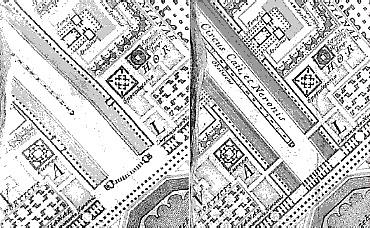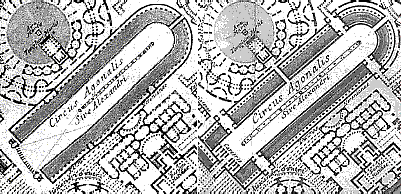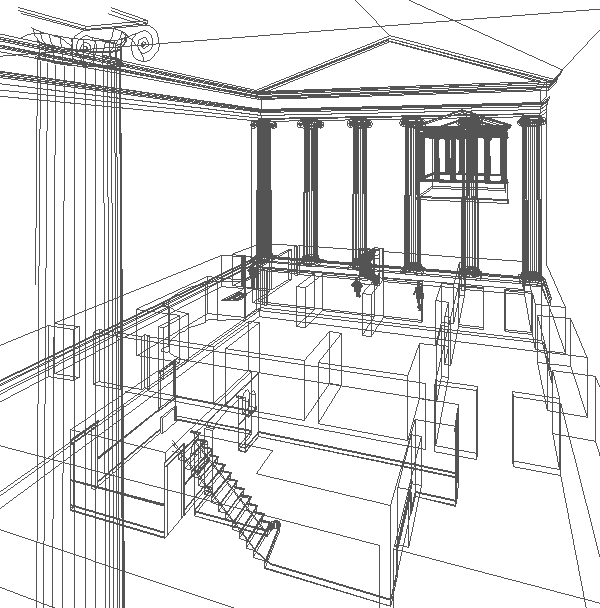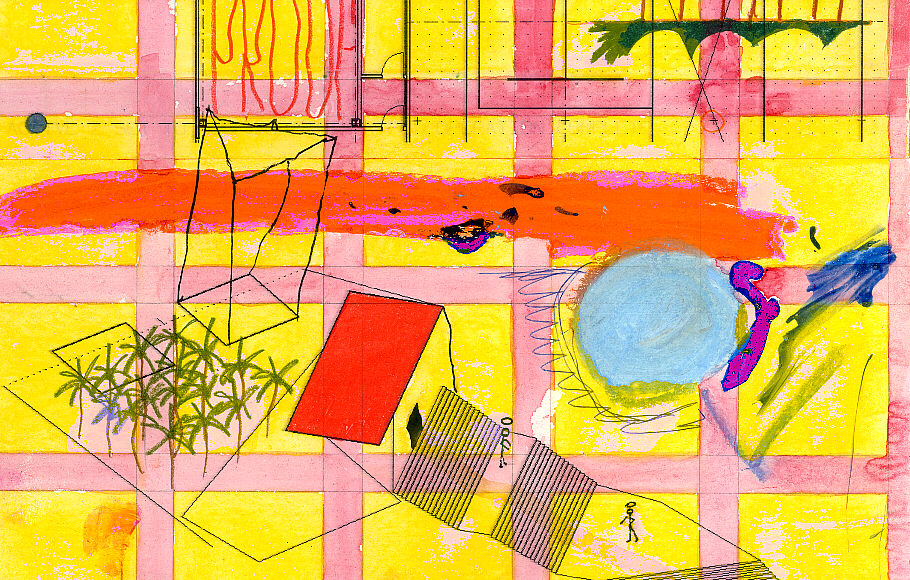1985
2000
...the first documentation of the heretofore undetected two differing published states of Piranesi's Ichnographia Campus Martius, the six fold-out plates that comprise a reenactment plan of ancient Rome within Piranesi's larger Il Campo Marzio dell'antica Roma 'archaeological' publication. After many years of redrawing and analyzing a printed reproduction of the Ichnographia, I went, on May 14, 1999, to see an original version of the Ichnographia at the University of Pennsylvania's Fine Arts Library. Within minutes of having a 'real' Ichnographia unfolded in front of me, I noticed that the Circus of Caligula and Nero is not only labeled, but also configured somewhat differently than the circus plan I was used to seeing. Of course, I was instantly very excited because nowhere have I ever read about the Ichnographia having two editions/states (like Piranesi's Carceri/Prisons have two published states/editions), and these two different plans are definitely not noted within Wilton-Ely's recent Giovanni Battista Piranesi - The Complete Etchings. Moreover, I believe I discovered something that no other architect, architectural historian, or art historian had noticed before. I then quickly scanned the rest of the plan to see if any other differences existed, and, sure enough, the Circus Agonalis is likewise different than the plan commonly reproduced. On 4 April 2000, I finally returned to Penn's Fine Arts Library to document the two different Ichnographia via tracings and taking digital images:

The image above left is the Circus of Caligula and Nero as the Ichnographia is commonly reproduced. The image above right is the Circus of Caligula and Nero as it appears within the University of Pennsylvania's (original) copy of the Campo Marzio.

The image above left is the Circus Agonalia as the Ichnographia is commonly reproduced. The image above right is the Circus Agonalia as it appears within the University of Pennsylvania's (original) copy of the Campo Marzio.
The differing plans raise several questions:
Did Piranesi himself make these changes, or did perhaps his son Francesco, and if Piranesi made them, then why?
Which set of plans were 'drawn' first?
Does this 'change of plan' carry any possible semiotic or symbolic message regarding the Ichnographia's larger meaning?
Does this physical evidence offer any indication of Piranesi's 'design' method?
2007

| |


details of Active Z Set To Display Depth
2008
"Page 68 of Privacy and Publicity: Modern Architecture as Mass Media is loaded, and the dyslexical error therein provides a spark capable of igniting an explosion. More truth may in fact lie with the notion that the attributes of memory and remembrance are indeed interchangably fluid rather than strictly opposed. Le Corbusier's 'doctoring' of photography (as discussed in the chapter after page 68) even seems to be a perfect example of the interchangable fluidity of memory and remembrance."
--Balloon and Prick: Modern Reading as Virtual Architecture, (forthcoming).
It may be well worth noting that the publication of S,M,L,XL closely coincides with the dawn of the easily-browsable/easily-publishable hypersized internet. Ends and beginnings are both extreme situations.
S,M,L,XL is indeed a kind of "browsable" book that predates the internet in its breadth, and, for me at least, has stimulated publishing via the internet.
As far as I'm concerned, the internet makes "creating a fixed/fluid, massive, all-encapsulating text" even more possible.
| |
2013
For a few of weeks now, I've been of the opinion that The Autopoiesis of Architecture would have been a much better book if it had been written and composed like S,M,L,XL.

|
|